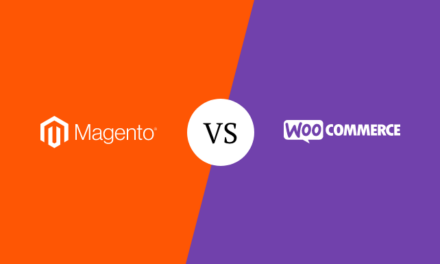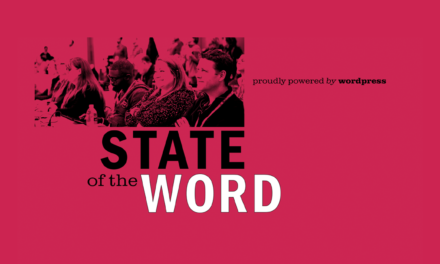Blogging is extremely popular, and doesn’t seem to be slowing down any time soon.
If you aren’t aware of this from personal exposure, check out these stats:
- There are more than 600 million blogs, out of 1.9 billion websites in the world
- There are over 31 million active bloggers in the U.S., posting at least once per month
- Tumblr hosts over 518 million blogs
- WordPress hosts over 60 million blogs (powering over 42.8% of the internet)
- Roughly 70 million new posts are published on WordPress each month
- 77 million new comments are published every month on WordPress
- 77% of internet users read blogs
- 77% of bloggers report that blogging drives results
- “How to start a blog” is searched on Google 53,000 times per month, worldwide (over 1,700 people every day consider starting a blog)
That’s more than a niche market; it’s most decidedly mainstream.
So a natural line of thought after reading this might be… Do blogs benefit from having a .blog domain?
That’s precisely what we’re going to talk about in this article.
Continue reading, or jump ahead using these links:
- Some History: Generic Top-Level Domains
- Q&A Session
- Will a .blog domain make me more findable?
- Are there any obvious reasons I should get a .blog domain?
- I have a blog on my site. Do I need to get a .blog address?
- Can I keep my existing domain?
- Does this mean I’ll have to get a license to blog someday?
- Ok… I Want One! Where Can I Register for a .blog Site?
- Say Guten Tag to dot Blog
Some History: Generic Top-Level Domains
Generic top-level domains (.com, .org, .edu, .net, .gov, & .mil) have been around since the internet first came into existence. Initially there were only a handful, eventually reaching over twenty.
With growing website registry demand and serious limitations on available options, expanding the domain space became a necessity. Hence the category “New TLDs” was birthed, and currently includes more than a thousand names (aka, strings).
New TLDs cover a diverse space, from broad categories, like .tech, .design, & .restaurant, to more targeted breakouts, like .coffee, .pizza, and a multitude of others.
As additional TLDs become available, the domain space grows, allowing more companies to purchase short, memorable, descriptive web addresses. This is a big deal, since nearly half of all domains are registered under the .com domain extension, while the next few TLDs barely scratch 5% usage.
Q&A Session
Before you decide whether to buy a .blog domain name for yourself or your business, there are a few things to consider.

Will a .blog Domain Make Me More Findable?
There are no guarantees when it comes to this. However, the possibilities are promising.
Google has updated its algorithms to better recognize the new top-level domains. That gives .blog a more level playing field with the already established domains.
According to Google, new domain name endings are not treated any differently than traditional domain name endings like .com or .org. That’s an important detail when it comes to SEO and ranking.
What you can personally do to make the new address more findable is to meet expectations. Even if you have other content on your website, ensure that your blog is the main attraction when visitors arrive at your .blog site.
Are There Any Obvious Reasons I Should Get a .blog Domain?
If you wanted a particular domain name when you first launched your website but had to settle for something else, that could be a compelling reason to get a .blog address.
At the other end of the spectrum, if you originally tried to be the end-all/be-all for a particular subject, but only your blog took off, you might prefer the better representation a .blog domain would bring.
If your primary interest is sharing your thoughts and opinions, curating and commenting on current events, reviewing/revealing products or services on a platform for public consumption— i.e., running a blog—a .blog domain is an ideal solution.
I Have a Blog on My Site. Do I Need to Get a .blog Address?
Nope. Any site can have a .blog address. But as Captain Obvious might say, it is intended to be used by sites whose primary content is blogs.
You might consider getting one if your blog is an essential part of your business. If you’re a content developer, a .blog address might attract customers.
Or, if you find that your blog topics are veering away from your site’s purpose, you could move the “off-topic” posts to a separate .blog site. This is the approach Mullenweg himself took with Matt.blog, which he calls “Matt on Not-WordPress, mostly photos.” (Not to be confused with his original, long-running, WordPress blog, Matt Mullenweg, “Unlucky in Cards”.)
Can I Keep My Existing Domain?
Sure. Keeping your existing site where it is and redirecting traffic from your old domain to your .blog domain name can retain your link juice.
When you do this, being careful during implementation is important. Make sure that you track your server logs carefully for the first few weeks. If you’ve missed a page, visitors will get 404 Not Found errors, which will negatively impact your SEO.
If you need help with site architecture and redirecting, check out this post on channeling link power to the rest of your website.
Does This Mean I’ll Have to Get a License to Blog Someday?
James Bond, is that you? (LOL). You do not have to get a .blog domain to write web content in the form of posts presented in chronological order. You may continue to blog on any site in the vast expanse of the world wide web.
The rights to control .blog domains were purchased by WordPress co-founder Matt Mullenweg’s company, Automattic, in 2016, for a whopping $20 million.
In an interview with Domain Name Wire, Mullenweg said that one of the reasons he decided to do this was the fear that had Google become the administrator, it would restrict .blog to certain platforms. In his words:
“That just felt very anti-web to us, and just the idea that something as universal as the idea of a blog, which has been one of the most democratizing forces, I think, on the open web, would be closed to a single company with a fairly mediocre product, which is Blogspot.”
Ok… I Want One! Where Can I Register for a .blog Site?
Because .blog domains are now public, you should be able to buy them from most any domain registrar. Options are aplenty, with more than 200 registrars selling .blog domains.
According to ICANN Wiki’s nTLDStats, as of this writing (April 7, 2022) there are 204,153 .blog domains registered. Nearly half of these were purchased through Automattic (46.4%), followed by GoDaddy.com (8.2%), then NameCheap (5.9%).

If you want to use the official WordPress system, you can buy from get.blog. However, chances are you can get the .blog name you want for less by doing a little reconnaissance on some other domain registry sites.
Say Guten Tag to dot Blog
The .blog domain provides an opportunity to get clever with your branding.
Imagine you have a blog on running. It would really be on point to get “runners.blog”, instead of “runnersblog.com”. It’s a subtle difference, but ultimately slicker and quicker.
There is no SEO penalty for choosing .blog domains. Which means choosing a .blog over a .com doesn’t put you at any SEO disadvantage.
If you’re happy with your current readership and engagement, there’s probably no compelling reason to change to a .blog domain.
However, if you feel like your audience numbers could use a bump or your branding could use a boost, it might behoove you to get a .blog for your site.
If you decide to go the .blog route, it’s important to prepare before migrating your site. WPMU DEV hosting includes pro tools—Snapshot Pro for safe and efficient backups, & Shipper Pro for migration made easy—or our experienced team will do the work for you.
Some hosting companies also handle domain sales. (WPMUDEV is on track to roll out domain selling later this year!) Check with yours to see about getting a .blog domain with the ease of a one-stop-shop.
Alternately, you can scope out this list of .blog accredited registrars.
Editor’s Note: This post was rewritten for accuracy and relevancy.
[Originally Published: September 2016 / Revised: April 2022]
Tags:











